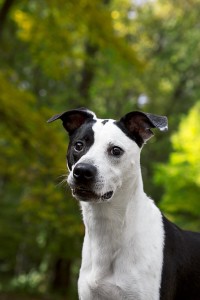Latest Posts
- Have a purpose when backyardingAugust 5 2021
- Study: Time outside alters our microbiomeAugust 4 2021
- Happy National Mutt Day from Mo-MoJuly 27 2021
- New home? Avoid these common mistakes in your yard.July 26 2021
- Infographic: Plan a backyard staycation this summerJuly 22 2021
Categories
Archive
August 11th
TurfMutt’s tips for celebrating National Dog Day on Aug. 26

National Dog Day is Saturday, Aug. 26. It’s a date set aside to celebrate dogs, recognize the number that need to be rescued each year, and acknowledge our canine friends who work to save lives and bring comfort.
In honor of this dog-gone good holiday, TurfMutt – a rescue dog himself – encourages pet parents to re-evaluate their family yard to ensure it’s appropriate for their furry friends.
Planted and cared for properly, the family yard can offer an outdoor living room for family, children and pets. It can also support biodiversity, foster health benefits for humans and pets, and benefit the environment.
As any gardener will tell you, fall is a time for planting in advance of the next year’s spring season! Here are TurfMutt’s top 5 tips for ensuring the family yard is a place everyone can enjoy year-round.
1) Consider your dog’s needs
Each dog — senior, puppy, small, big, active breed or not-so-much — has different needs. Is your dog a water hound? Maybe you should include a splash pool or water fountain. Got a digger? A sand pit might work well to keep your dog entertained — and the mess contained. Does your dog love to run the perimeter of your yard? Design your yard with his path in mind. Does she have dog friends next door? Maybe an eye-level hole in the fence would keep her from barking. Jot down everything your dog needs from your family yard, then map out your landscaping accordingly.
2) Keep your pet safe & sound
One of the most important pet features in your family yard is a secure fence — whether it’s made of wood, metal, vinyl or concrete. Inspect and fix your fence — or install one — so you can rest easy knowing your dog is safely within the boundary of your yard.
3) Include turfgrass
Turfgrass is safe — unlike concrete, asphalt or hard ground — and offers your pet a soft, cool spot to lie down, even during the hottest conditions. It also creates a comfortable backyard playground, and provides a place to take care of business — just be sure to clean up regularly! There are many types of turfgrass that can handle “ruff-housing” from dogs and kids alike. Check your climate zone to make sure you’re selecting an appropriate grass species for where you live. (Another bonus benefit is grass is very good at capturing and filtering rainwater.)
4) Select the right plants
You’ll want to have a balance of grass, flower plants, trees and shrubs in your family yard. Including this mix of species will not only be beautiful, it will also help support biodiversity. Remember, nature starts in your own backyard! Keeping your climate zone in mind, select appropriate landscaping for the areas you’ve identified in your yard. Around walking paths, for instance, you’ll want to include sturdy, yet soft foliage that can stand up to puppy and people traffic without scratching. Use elevated boxes and patio planters for more delicate flowering plants.
5) Avoid toxic plants
One last word of important advice — there are some plants and shrubs that are poisonous to dogs. You’ll want to avoid these in your outdoor living room entirely. The American Society for the Prevention of Cruelty to Animals (ASPCA) has a list of toxic plants that you should refer to when shopping for your family yard.





